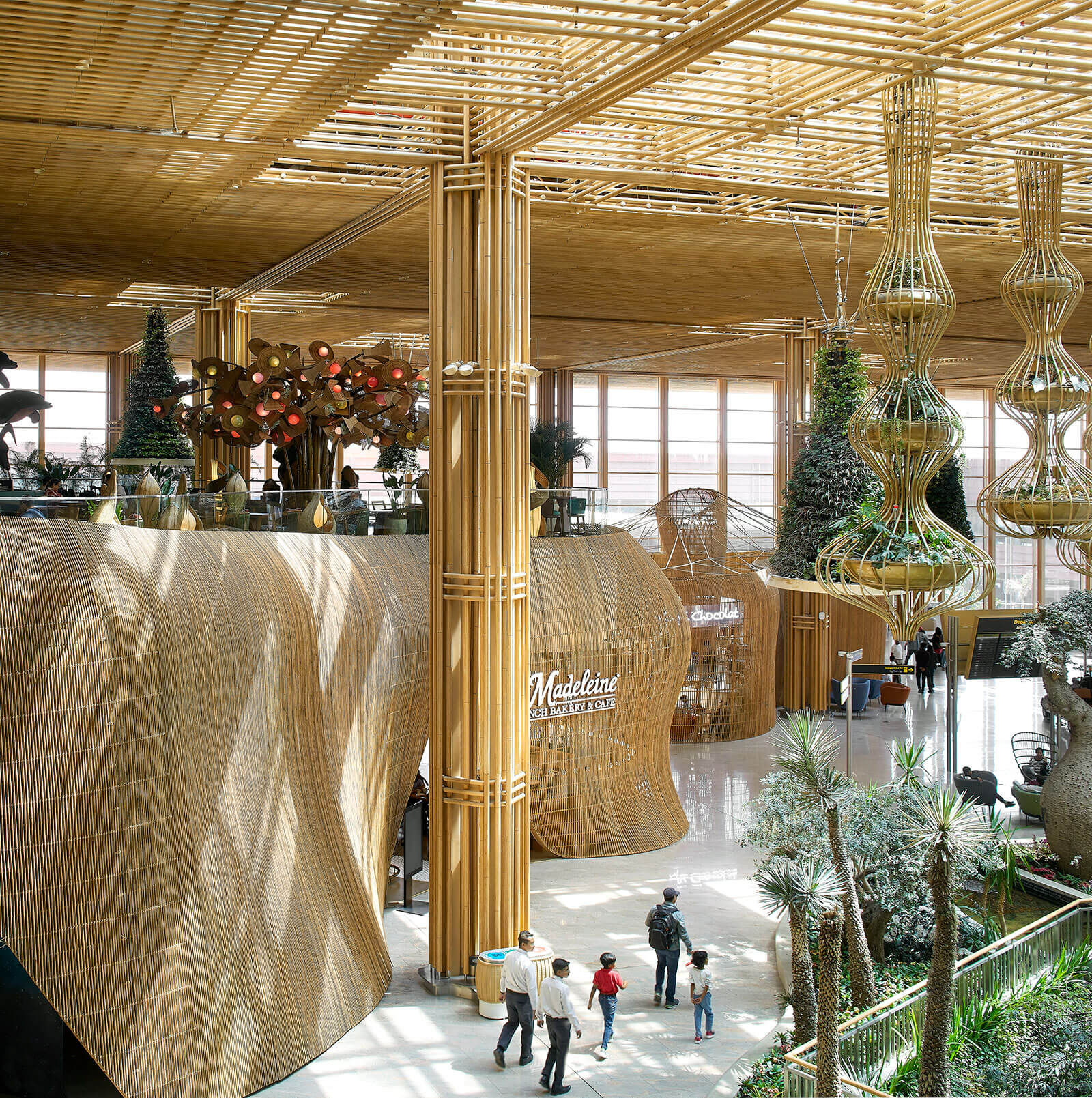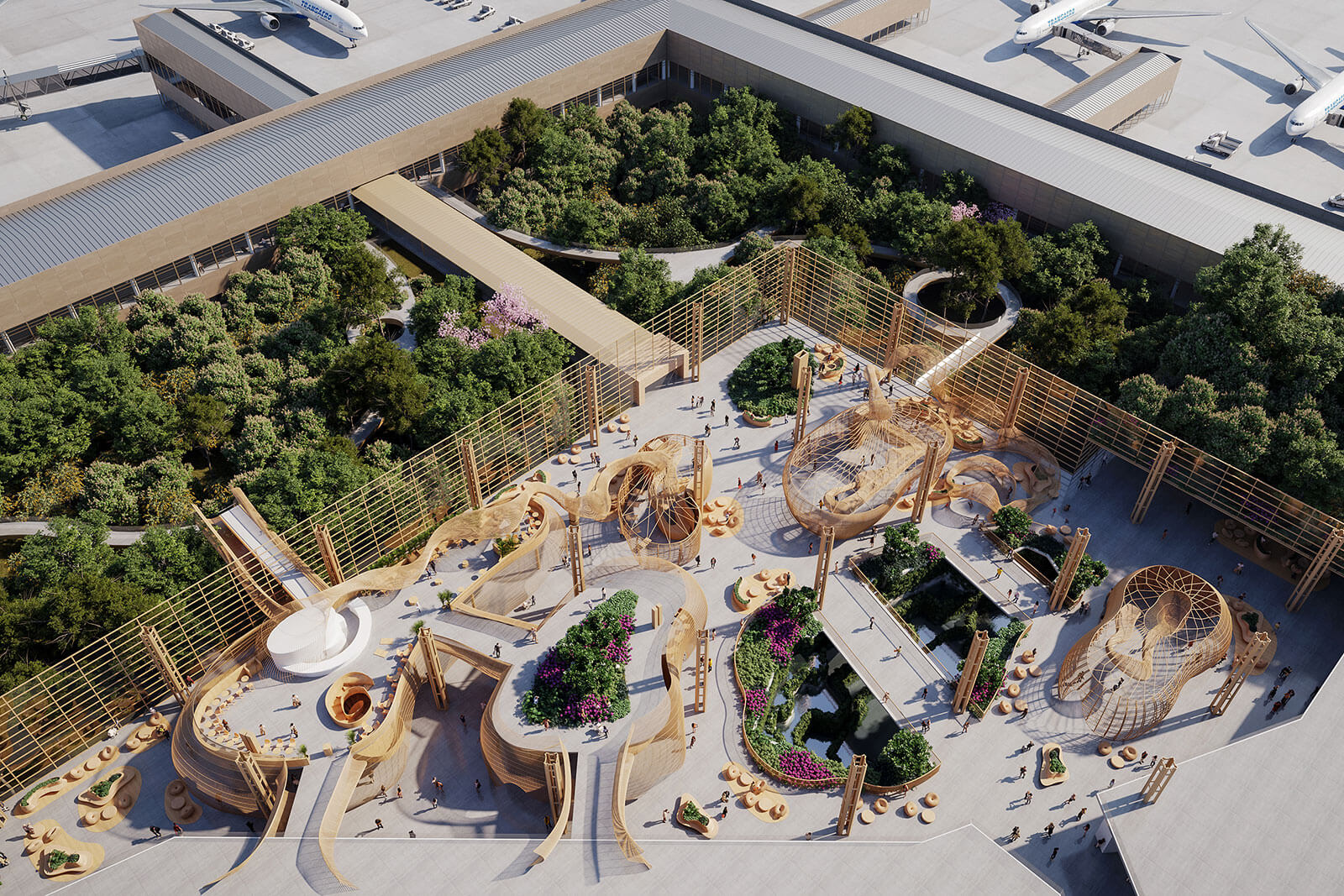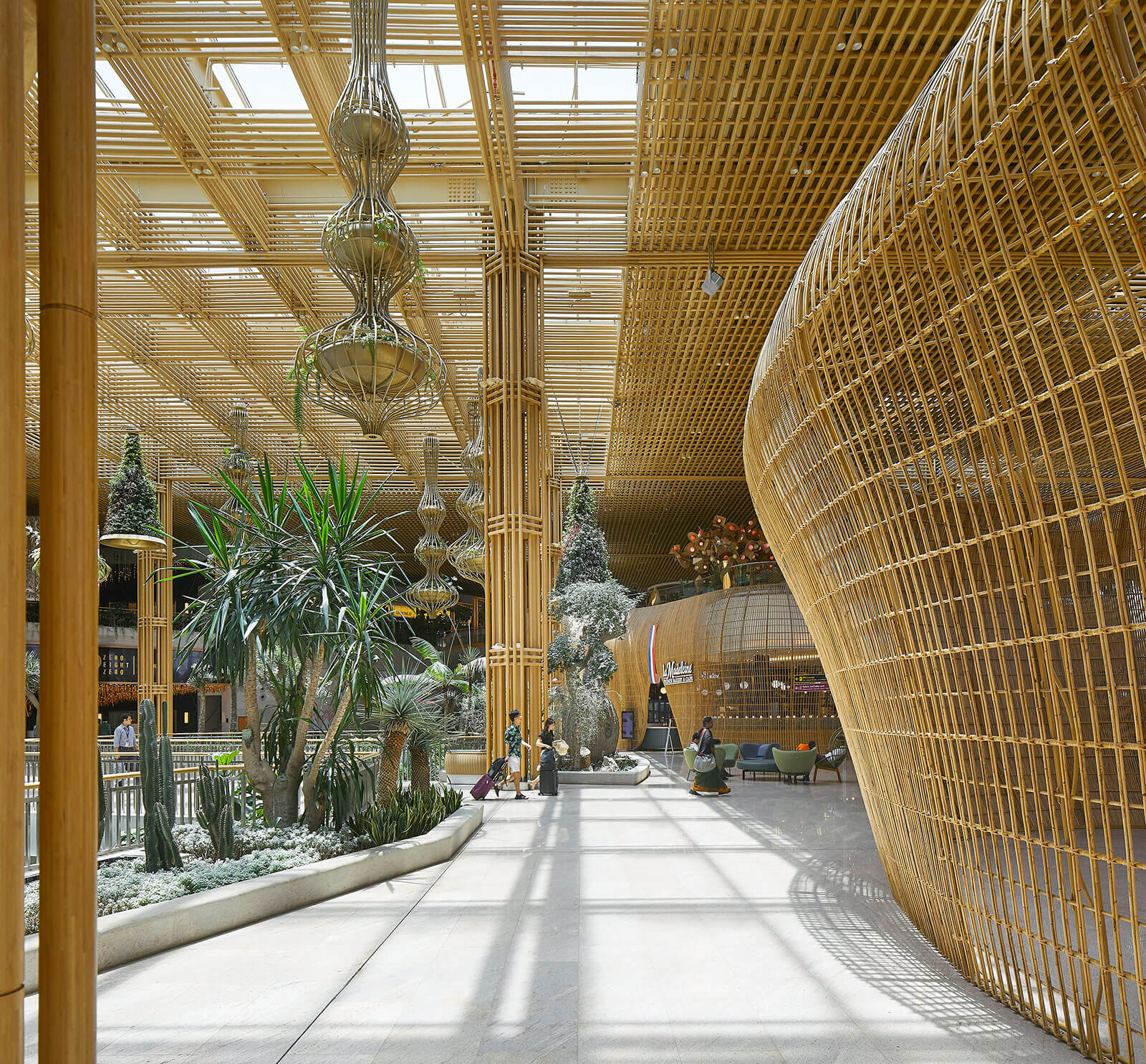Vy Architecture Studio's Vaazh House: a mud sanctuary embracing nature and memory
by Anushka SharmaJun 04, 2025
•make your fridays matter with a well-read weekend
by Dhwani ShanghviPublished on : Jun 15, 2024
The aviation industry significantly impacts the environment locally and globally, including, but not restricted to emissions from aircraft and ground vehicles. Airports, domestic or international, are hefty consumers of energy and producers of large amounts of waste, which often contribute to adverse local conditions while being infamous for globally spiking pollution levels. As essential infrastructure though, airports have historically contributed to the national and local economies through wealth generation, employment, and cultural exchanges, while continuing to facilitate the physical movement of people and goods. Today, as sustainable development influences the views of governments, regulators, investors, and travellers, an airport's role is coming into question.
In this context, airport design using tenets of sustainable practices and transitioning to sustainable fuels are essential strategies to offset aircraft emissions. Airports worldwide are adopting methods to reduce their industrial carbon footprint. The International Airport in Cochin, India, for instance, generates 100 per cent of its energy through renewables with the installation of solar panels on the airport buildings and surrounding land. Similarly, San Francisco Airport, in addition to using renewables, employs mapping and modelling tools to optimise its airfield layout. Airports are also embracing the principles of a circular economy, reusing materials, reducing waste, improving recycling, and committing to zero waste to landfill. The practice of their architecture too thus requires urgent management of resources, waste, energy and cost, while maintaining healthy indoor environments, through enduring innovation in sustainable practices. A holistic sustainable design therefore would integrate intrinsically ecological local cultural references—whether material, stylistic or conceptual—with contemporary techniques. In this context, natural materials such as bamboo, rattan, timber, clay, etc., which are not only renewable but also have a lower carbon footprint, are emerging as—almost pervasively so—ubiquitous building materials.
In the early 20th century, rattan became emblematic of the Tropical Deco style in the United States, facilitated by the import of Victorian-style furniture from the Philippines. Initially favoured for furniture and artefacts, it has, over the years, become increasingly significant in the building construction industry as a major non-wood forest product, second only to timber. Today, it is widely used in its elemental form, as a material to enclose vernacular shelters. Native to the tropical forests of Asia and Africa, rattan is durable, flexible and also lightweight. The visual quality of the plant-based palm, coupled with its ability to be crafted into organic structural expressions results in an aesthetic conducive to, and largely associated with, accessorising the boutique wellness architecture of Southeast Asia. The natural texture and flexibility extend themselves to create spaces that seamlessly blend into natural environments, simultaneously lending an ambience reminiscent of wellness retreats.

In the garden city of Bengaluru in Karnataka, Enter Projects Asia (EPA) illustrates the structural qualities of rattan outside this context of wellness architecture and implants it in the urban context of the city. The post-security departures area of Kempegowda International Airport's Terminal 2 features a 12,000 sq.m. space with retail, hospitality, and lounge areas, animated by a cluster of five rattan pods interspersed with green spaces.
The distinctly rural disposition of the pods, crafted from over nine km of rattan, embellishes the urban environment of the super airport, a concept inspired by Ebenezer Howard's post-industrialisation Garden City, which seeks to combine the benefits of city and country life while negating the drawbacks of either. Bengaluru’s designation as the garden city has little to do with the 20th century urban planning concept and simply highlights the coexistence of nature and the built environment.

The Bangkok-based practice employs parametric design tools to create organic forms generated from natural processes such as fluid dynamics. This approach not only ensures the seamless integration of the pods within the larger site context but also enables the development of these forms at rather unprecedented scales. Within this composition, islands of green spaces, hanging gardens, and vines define the circulation areas around the pods, following a path of least resistance. The design language that emerges from this computational exploration, thus heroes the rattan while simultaneously redefining concepts of enclosure, shelter, segregation, privacy and nature.

Designed as individual entities, the pods are ascribed unique profiles at varying scales, enclosing independent programs. The pliable rattan lends itself to enclosing the curvaceous volumes as efficiently as it clads the rectilinear columns present on site. The largest of the five pods has a height of 8 m and accommodates two floors with an internal staircase, a gazebo and a garden, within an area of 750 sq.m.
Handwoven at the studio’s factory in Bangkok, each section of the individual pods is a parametrically simulated solution and represents the merger of traditional crafts with state-of-the-art technology on a naturally occurring and renewable material. Constructed as a composition of rattan poles reinforced by a cross-weave, the form of the pods emerges from a curvilinear screen enveloping orthogonally planned interior spaces. The density of the weave thus varies to conceal or reveal the spaces inside, such that it is, at places a wall, a screen, and at others, merely a threshold.
The departures area of Terminal 2 at Kempegowda International Airport showcases an overall innovative approach to sustainability in the realm of technology by blending natural materials like rattan with computational design. This design language not only highlights the natural qualities of the material but also reinterprets traditional notions of shelter and sustainability through a parametric lens. With that rhetoric in mind, while the touted environmental impact of transporting rattan back to Karnataka (incidentally, one of the largest exporters of rattan in the country) is especially noteworthy, the integration of rattan in this urban setting nonetheless demonstrates the potential of combining ecological and cultural references with contemporary design.
by Anushka Sharma Oct 06, 2025
An exploration of how historic wisdom can enrich contemporary living, the Chinese designer transforms a former Suzhou courtyard into a poetic retreat.
by Bansari Paghdar Sep 25, 2025
Middle East Archive’s photobook Not Here Not There by Charbel AlKhoury features uncanny but surreal visuals of Lebanon amidst instability and political unrest between 2019 and 2021.
by Aarthi Mohan Sep 24, 2025
An exhibition by Ab Rogers at Sir John Soane’s Museum, London, retraced five decades of the celebrated architect’s design tenets that treated buildings as campaigns for change.
by Bansari Paghdar Sep 23, 2025
The hauntingly beautiful Bunker B-S 10 features austere utilitarian interventions that complement its militarily redundant concrete shell.
 surprise me!
surprise me!
make your fridays matter
SUBSCRIBEEnter your details to sign in
Don’t have an account?
Sign upOr you can sign in with
a single account for all
STIR platforms
All your bookmarks will be available across all your devices.
Stay STIRred
Already have an account?
Sign inOr you can sign up with
Tap on things that interests you.
Select the Conversation Category you would like to watch
Please enter your details and click submit.
Enter the 6-digit code sent at
Verification link sent to check your inbox or spam folder to complete sign up process



by Dhwani Shanghvi | Published on : Jun 15, 2024
What do you think?